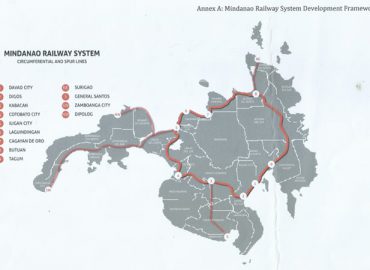By Angela Celis, June 17 2019; Malaya
https://www.malaya.com.ph/business-news/business/cost-money-ph-won%E2%80%99t-be-cheap-soon
Image Credit to Business Mirror
Thus, Carlos Dominguez, DOF secretary, said the government had to act fast and took advantage of whatever opportunity was left to borrow at low, concessional rates by frontloading its borrowings and diversifying sources to jumpstart the “Build, Build, Build” program.
“From 2010 to 2016, the cost of money around the world was near zero. That was the best time to borrow, and we did not borrow. They were not aggressive enough to fund projects when costs were really, really low,” Dominguez said, referring to the past administration.
He said when the current administration took over, borrowings costs have gone up because the economic environment has changed.
“They are still low compared to historical levels but not as low as they were from 2010 to 2016,” he said.
With the Philippines’ forthcoming elevated status as an upper middle-income economy, Dominguez said the cost of money is going to be higher as the country will no longer qualify for the lower interest rates for poorer countries.
Dominguez was referring to low lending rates granted by development partners to countries classified as low-income and lower middle-income economies.
For instance, Japan’s Special Terms for Economic Partnership (STEP) facility for its Official Development Assistance loans grant lower interest rates with fixed terms to low-income countries.
Lower middle-income countries like the Philippines’ current status do not qualify for STEP rates but may be granted preferential terms although with higher interest rates. Upper middle countries get higher interest rates than lower middle-income countries.
Dominguez pointed out borrowing money is not bad per se if the funds would be invested in strategic projects that would generate massive returns for the people, such as initiatives to expand access to, and improve the quality of, education and healthcare; and in infrastructure projects that have the highest multiplier effects, like creating more jobs and generating more business activities.
“Now, if we borrow and invest it in projects that don’t make a return, then that’s really very bad,” Dominguez said.
“Among the projects that we are investing in is better education. So a better education has a tremendous return to the economy. Also, better healthcare for Filipinos not only for their personal benefit but for their ability to contribute to the growth our country; and of course, in infrastructure,” he added.
Dominguez said the gauge to determine whether the national debt is manageable is to measure it as a percenta ge of gross domestic product (GDP) or an economy’s ability to grow.
“If we are not growing and borrowing, that’s really bad. But because we are growing, we have the ability to borrow more because we have the productive capacity to pay more,” he said.
During the Arroyo administration, the debt-to-GDP ratio was at 75 percent, which went down to around 55 percent during the Aquino administration, and continued to decline in 2018 at 41.9 percent under the Duterte administration, Dominguez said.
He said the debt-to-GDP ratio is expected to further decrease to 38.6 percent by 2022.

